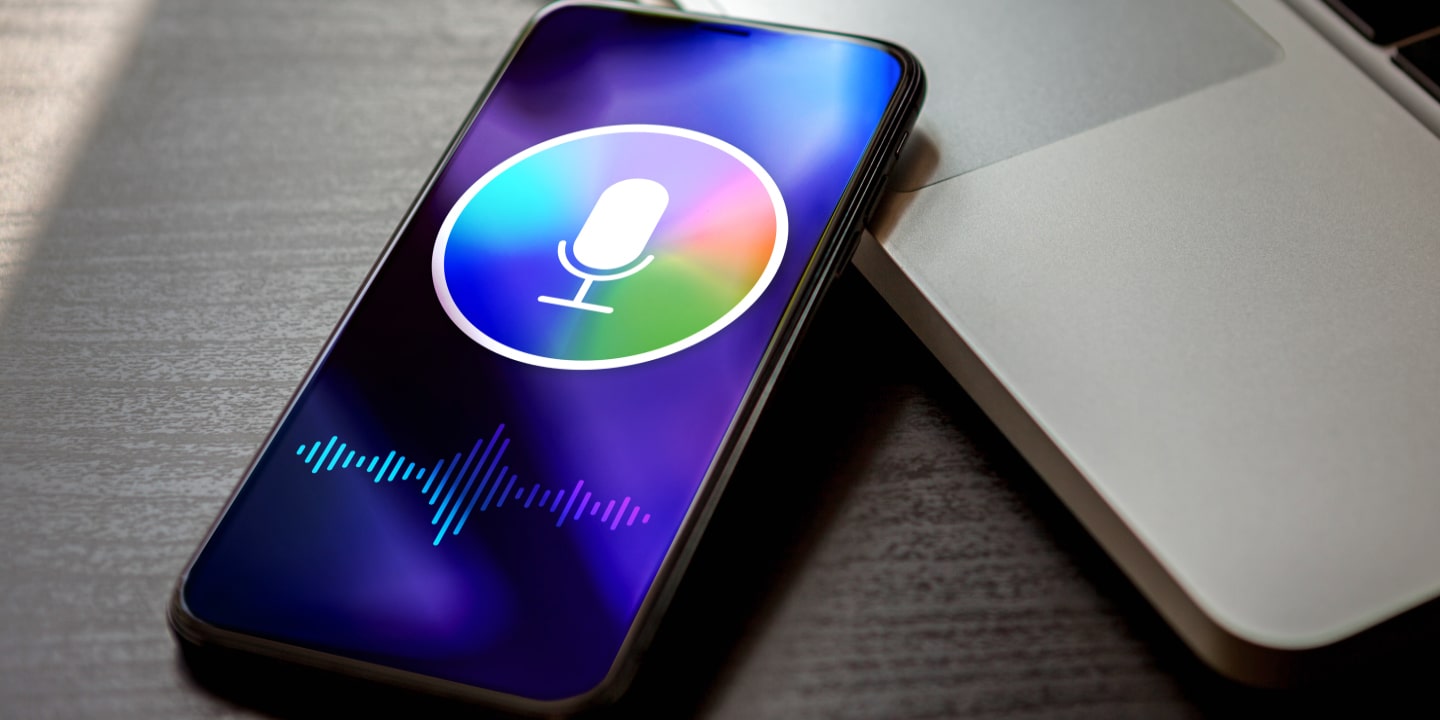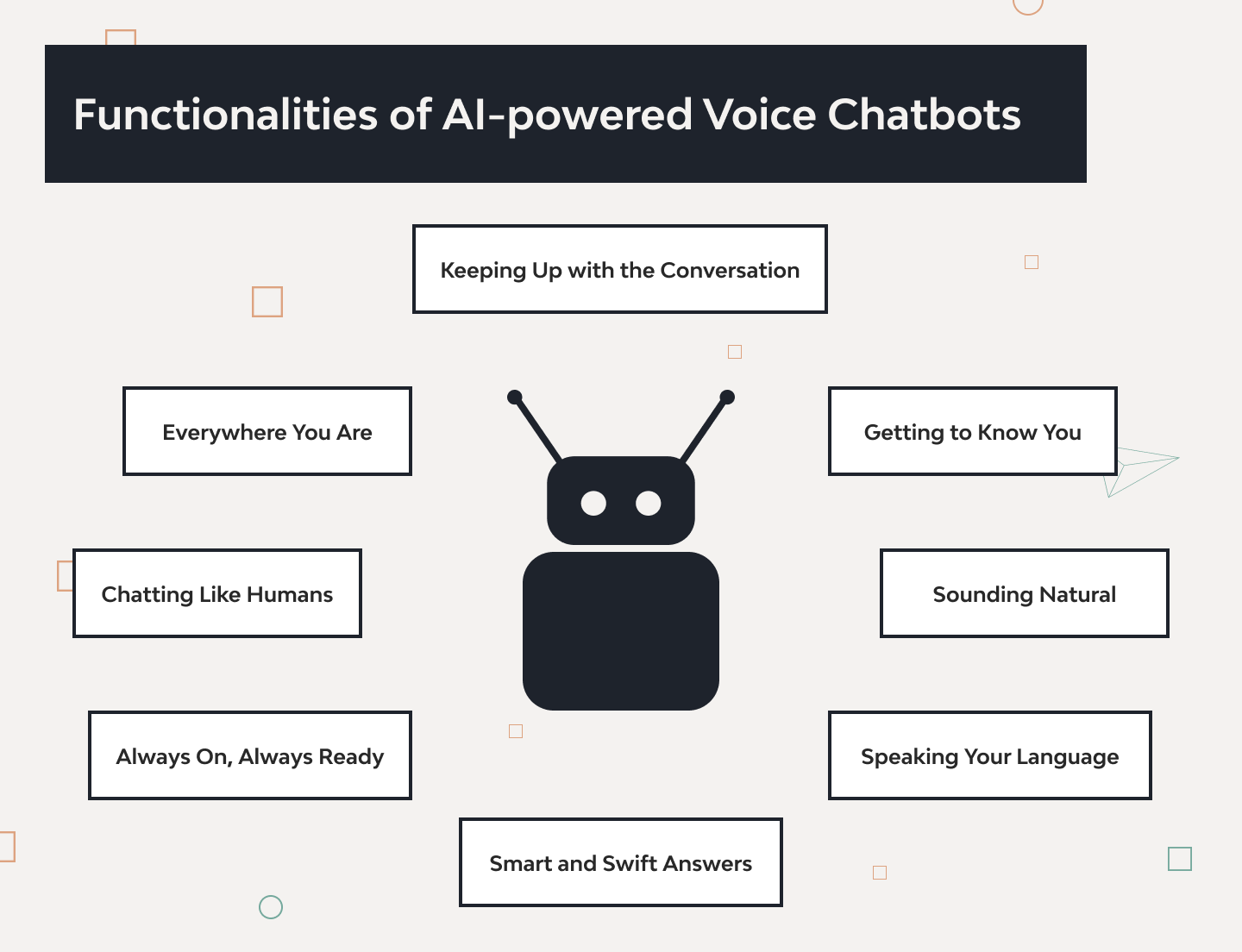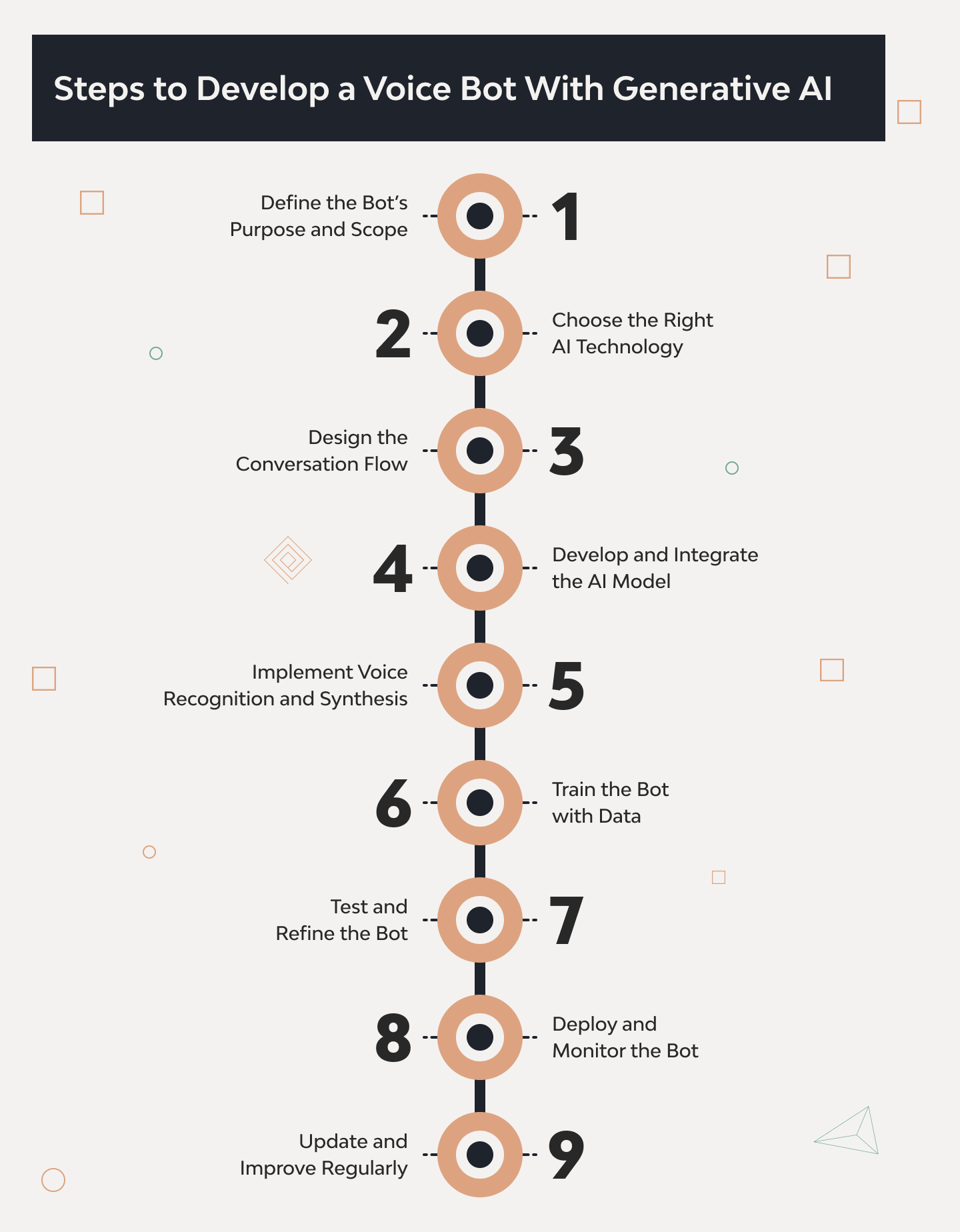Development of Voice Bot with Generative AI: Ultimate Guide

Welcome to our comprehensive guide on the development of voice bots with generative AI. Django Stars’ journey into bot development with generative AI has been marked by groundbreaking achievements and insightful experiences.
We’ve tackled complex projects that required a deep understanding of natural language processing, machine learning, and user experience design. Our experience ranges from developing simple chatbots for startups to sophisticated voice assistants for large enterprises.
In this article, we will dive deep into the world of voice bots and generative AI. We’ll start with the fundamentals of voice bot technology. We will explore the step-by-step process of developing a voice bot, discuss real-world applications and the latest trends, and address the challenges faced in this field.
We aim to provide a thorough guide that not only shares our expertise but also equips you with practical knowledge and tools to embark on your voice bot development journey.
Functionalities of AI-powered Voice Chatbots
Let’s dive into the benefits that make these chatbots so special.

Chatting Like Humans. Chatbots understand everyday language just like we do. This means you can chat with them naturally, just like talking to a friend.
Keeping Up with the Conversation. Ever talked to someone who forgets what you said a minute ago? Not these chatbots! They remember what you’ve discussed and keep the conversation flowing smoothly.
Getting to Know You. Bots learn a bit more about your preferences every time you chat. This means they get better at tailoring their responses to you personally over time.
Speaking Your Language. Chances are these chatbots can chat in your language. This is a huge plus for reaching a global audience.
Everywhere You Are. You’ll find these chatbots on websites, apps, and even social media. It’s like having a helpful buddy in your pocket ready to chat whenever you need.
Sounding Natural. These bots don’t just understand spoken words. they reply in a voice that sounds surprisingly human. It makes chatting more enjoyable and engaging.
Smart and Swift Answers. Got a complex question? No problem. These chatbots can sift through tons of info quickly to give you the right answer.
Always On, Always Ready. They’re like your never-sleeping always-ready-to-help friend. They’re perfect for handling lots of questions without missing a beat.
Read Also: Retrieval Augmented Generation for Question-Answering
How to Create a Voice Bot With Generative AI: Top 9 Steps
Voice bot development is complex with a key challenge being the delay in speech-to-text and text-to-speech conversion. Django Stars focuses on minimizing this delay aiming for seamless and real-time interactions. This guide outlines steps to build effective AI powered voice bots.
Step 1. Define the Bot’s Purpose and Scope
Clearly outline what your bot should achieve. For example, if you’re creating an artificial intelligence voice bot for customer service in retail, it should handle queries about products, orders, and returns. Document the types of questions it should answer and the tasks it should perform.
This step also involves understanding the complexity of voice interaction and preparing for challenges in real-time communication.
Step 2. Choose the Right AI Technology
Select AI platforms based on your needs. For a conversational bot, GPT-3 or GPT-4 from OpenAI are good for generating human-like responses. If you need voice recognition, consider using Google’s Speech-to-Text API or IBM Watson Speech-to-Text.
The complexity here lies in choosing the right combination of technologies that can handle the conversion from voice to text and back without significant latency.
Step 3. Design the Conversation Flow
Map out typical dialogues. For a hotel booking bot, design scripts that guide the user from choosing a destination to selecting room types and confirming the booking. Tools like Botmock and Botsociety can help visualize these flows.
The challenge is to create a flow that feels natural despite the inherent latency in converting speech to text and then to AI-generated responses.
Step 4. Develop and Integrate the AI Model
If you’re using GPT-3, you’ll need to apply for API access from OpenAI. Then, integrate this API into your bot’s backend. It could be built in Python, Node.js, or another programming language.
Here, the complexity includes ensuring seamless integration of different technologies (speech recognition, AI processing, speech synthesis) while minimizing response time.

Step 5. Implement Voice Recognition and Synthesis
For converting speech to text and vice versa, use APIs like Google’s Text-to-Speech and Speech-to-Text. These tools can recognize spoken language and respond in a natural, human-like voice. The key challenge is to achieve natural, human-like responses with minimal delay.
Step 6. Train the Bot with Data
This involves feeding the bot examples of conversations and user interactions. If you’re building voice bot with generative AI for a movie booking app, you would train it with movie genres, theater locations, showtimes, and typical customer inquiries.
The complexity arises from ensuring the bot can handle a wide range of queries and accents in real-time.
Step 7. Test and Refine the Bot
Start with beta testers or a small user group. Track how the bot handles different queries and accents. Use tools like Chatbase or Dashbot to analyze conversations and identify areas for improvement. Addressing latency issues and ensuring the bot can handle different queries and accents in a natural, timely manner is also important.
Step 8. Deploy and Monitor the Bot
Deploy your bot on the intended platform, whether it’s a website, app, or social media channel. Use monitoring tools to track its performance and user engagement. The challenge is to maintain efficiency in real-time interactions and quickly address any issues like misunderstandings or delayed responses.
Step 9. Update and Improve Regularly
Based on user feedback and performance data, continually refine your bot. This involves not just expanding the knowledge base, but also enhancing the bot’s understanding of natural language and reducing latency for a smoother conversation experience.
Setting Up Your Development Environment: A Detailed Guide
Creating an effective environment for the development of voice bot with generative AI involves choosing the right tools and understanding their specific pros and cons. Here’s a breakdown with actionable advice:
Programming Language – Python:
Utilizing Python for AI voice bot development offers unparalleled flexibility and efficiency, harnessing its powerful libraries and user-friendly syntax.
- Pros: Widely used in AI, rich libraries (e.g., TensorFlow, PyTorch), good community support.
- Cons: Slower than languages like C++, less suitable for mobile development.
- Action: Install Python from the official Python website. Choose this for AI development due to its extensive libraries and community support.
Speech APIs – Google Cloud Speech-to-Text/Text-to-Speech:
- Pros: High accuracy, support of multiple languages, and easy integration with other Google Cloud services.
- Cons: Usage costs can be high with scale. internet dependency for API calls.
- Action: Implement these APIs for robust speech recognition and synthesis. Optimize usage to manage costs.
Bot Frameworks – Microsoft Bot Framework/Rasa:
- Pros: Microsoft Bot Framework integrates well with Microsoft services. Rasa is open-source and highly customizable.
- Cons: Microsoft Bot Framework can be complex for beginners. Rasa requires more setup and understanding of machine learning.
- Action: Use Microsoft Bot Framework for a more guided development process with Azure integration. Choose Rasa for a more flexible, open-source approach.
Training Your Voice Bot
Steps for Training:
- Data Collection. Gather a diverse dataset that reflects various user interactions. For a customer service bot, this includes typical customer queries and requests.
- Data Preprocessing. Clean and organize the data. Remove irrelevant information, correct errors, and format the data consistently.
- Choosing a Model. Decide on a machine learning model. For language understanding, models like BERT or GPT-3 are popular choices.
- Feeding the Data. Input your preprocessed data into the model. Ensure it’s in a format that the model can process.
- Training the Model. Run the model on your data. Use computing resources efficiently to manage the training time and costs.
- Evaluating Performance. Test the model with a separate set of data to evaluate its accuracy and responsiveness.
Tips for Optimization:
- Use transfer learning by starting with a pre-trained model and fine-tuning it with your data.
- Regularly update the dataset with new inputs to improve the model’s learning.
- Experiment with different hyperparameters to find the optimal configuration.
- Utilize cloud computing resources to speed up the training process.
Integration with Voice Platforms
Integrating your voice bot with platforms like Amazon Alexa and Google Assistant opens it to a wider user base.
Steps for Integration:
| 1. Understand the Platform's Capabilities. |
|---|
| Each platform, like Alexa or Google Assistant, has its own set of features and limitations. |
| 2. Register as a Developer. |
| Sign up on the respective platform’s developer console (Amazon Developer Console for Alexa, Actions on Google for Assistant). |
| 3. Develop Custom Skills or Actions. |
| For Alexa, develop custom skills. For Google Assistant, create actions using Dialogflow. |
| 4. Follow Platform Guidelines. |
| Adhere to the specific guidelines provided by these platforms for voice interaction design. |
| 5. Test on the Platform. |
| Utilize the platform's testing tools to ensure compatibility and performance. |
Customization and Personalization
Customizing and personalizing your voice bot enhances user experience and engagement.
Techniques for Customization:
- Implement user data tracking to tailor responses based on past interactions.
- Use AI to analyze user preferences and adjust the bot’s behavior and recommendations accordingly.
- Allow users to set preferences regarding language, tone, and interaction style.
Testing and Debugging
Thorough testing ensures your voice bot functions correctly and provides a good user experience.
Testing Strategies:
- Conduct unit testing for individual components of the bot.
- Perform integration testing to ensure all parts of the bot work together seamlessly.
- Use beta testers to gain real-world feedback on the bot’s performance.
Common Issues and Troubleshooting:
- Misunderstanding User Inputs. Improve the bot’s NLP capabilities or add more training data.
- Inaccurate Responses. Refine the AI model and review the logic of the bot’s decision-making process.
- Slow Response Times. Optimize the bot’s backend and check for any bottlenecks in data processing.
Real-world Use Cases and Applications
Voice bots are helpful for various business niches and purposes, from customer support to interactive advertising. Our experts have researched the global market and collected a list of the most common AI voice bot examples.
Customer Service in Retail:
‘Sephora Virtual Artist’ on Facebook Messenger uses a chatbot to offer beauty advice and product recommendations. Users can upload a photo and virtually try on different makeup products.
Retailers can develop similar AI-powered bots to provide personalized shopping experiences. This will help customers make informed decisions.
Healthcare Appointments and Reminders:
‘Babylon Health’ uses AI to offer medical consultations. Users can speak to the bot about their symptoms. The system provides medical advice or escalates the query to a human doctor if necessary.
Healthcare providers can use such technology for preliminary diagnostics, appointment bookings, and sending automated reminders.
Banking and Financial Services:
‘Erica’ by Bank of America assists customers through voice and text. It helps users track their spending, and make payments. It also provides financial guidance.
Financial institutions can integrate similar bots into their services for efficient customer support and financial management.
Travel and Hospitality Bookings:
‘Mezi’ is a virtual travel assistant. It helps users plan trips by finding flights, hotels, and itineraries. It learns from user preferences to provide tailored recommendations.
Travel agencies and hospitality businesses can adopt AI bots to simplify the booking process and offer personalized travel solutions.
Smart Home Assistants:
Amazon’s ‘Alexa’ and Google’s ‘Assistant’ in Google Home devices enable users to control smart home features, play music, set reminders, and access information using voice commands.
Companies in the smart home industry can integrate voice bots to enhance the functionality and user experience of their products.
Educational Tools and Tutoring:
‘Duolingo’ is a language-learning app. It uses AI bots to simulate natural conversation and helps users practice speaking in a new language in a stress-free environment.
Educational platforms can incorporate AI powered voice bots to provide interactive and personalized learning experiences, adapting to each user’s learning pace and style.
AI-based Voice Bot Development Costs
Developing an AI voice bot price depends on specific requirements and requested functionality.
The main complexity is using a set of interrelated neural networks. The first recognizes the voice, the next generates a proper answer to the client’s request or question, and the third system voices the text. The final cost of development should consider all software development and interaction complexities.
Here is the approximate calculation of the full-fledged AI-based voice bot development cost:
| Development stage | Person-hours to design | Approximate price, $ |
|---|---|---|
| Research and planning | 40-200 | 2,000-10,000 |
| Data collection | 10-100 | 500-5,000 |
| AI and ML development | 200-600 | 10,000-30,000 |
| Backend development | 200-600 | 10,000-30,000 |
| Frontend development | 100-200 | 5,000-10,000 |
| Solving compatibility issues | 100-200 | 5,000-10,000 |
| Feature integration | 100-300 | 5,000-15,000 |
| Testing and security | 100-200 | 5,000-10,000 |
Pay attention that the final development price may differ from the development team location. For example, average US and UK agencies have about a $100-150 price rate per person-hour. The most famous may even request over $200 per hour. But in Ukraine, the average development team hourly rate is $50. Hiring an agency from Ukraine is wise for complex and long-term projects.
NB: maintenance and updating would cost 10-20% of the initial development price. AI-based bots are flexible and unstable, requiring more attention than standard communication systems.
Future Trends and Challenges
Voice bot technology continues to evolve bringing new opportunities and challenges.
Emerging Trends
Increased Personalization. Voice bots are expected to become more adept at understanding individual user preferences and adapting their responses accordingly. they can provide a more personalized experience. This is in line with conversational AI trends towards creating more intuitive and tailored interactions.
Multimodal Interactions. Integration of voice bots with visual displays and other sensory inputs will create more immersive and interactive experiences. Virtual assistants can combine voice with visual feedback.
Enhanced Natural Language Understanding. Advances in AI will enable voice bots to understand and interpret human language with greater nuance and accuracy.
Greater Integration in Daily Life. We expect to see voice bots become more embedded in everyday objects – from household appliances to public kiosks.
Privacy and Security Enhancements. As voice bots become more prevalent, there will be a greater focus on ensuring data privacy and security. It’s essential in sensitive industries like healthcare and finance.
Potential Challenges
Privacy Concerns. voice bots collect personal data, so maintaining user privacy will be crucial. Encrypted data storage and transparent data usage policies are essential.
Ethical Considerations. The need to address biases in AI and ensure the ethical use of technology will be one more concern.
Technical Limitations. Here we mean overcoming limitations in understanding diverse accents and dialects in speech recognition.
User Acceptance. Ensuring that users feel comfortable and find real value in interacting with voice bots is key to widespread adoption.
Strategies to Address Challenges:
- Regularly update privacy policies and ensure compliance with regulations like GDPR.
- Implement unbiased training practices and regular audits for AI models.
- Invest in research to improve speech recognition algorithms for diverse user groups.
- Conduct user experience research to understand user needs and preferences better.
Conclusion
This guide has explored the concept of how to make voice bot powered by AI. We tried to cover everything from development steps to real-world applications. We’ve seen how these bots are transforming industries by providing efficient, personalized, and engaging user experiences.
AI powered voice bots will continue to play a significant role in shaping our interactions with technology, offering convenience, efficiency, and a touch of personalization in our digital experiences.
At Django Stars, we have strong expertise in developing AI-powered tools, including bots with text and voice interfaces. Contact us and share your idea to get a detailed calculation of all stages of creating a voice AI-bot, from research and learning database creation to final tuning and maintenance.
- Why should I consider using generative AI in my voice bot development project?
- Generative AI offers advanced capabilities in natural language processing and understanding. It allows your voice bot to generate more natural, human-like responses. Which can improve user engagement and satisfaction. Additionally, generative AI enables the bot to learn from interactions.
- What programming languages are commonly used for voice bot development with generative AI?
- Python is the most popular language for voice bot development with generative AI due to its simplicity and extensive libraries like TensorFlow and PyTorch. Other languages like Java and C++ are also used. But Python remains the go-to choice for its AI and machine learning capabilities.
- Is it necessary to have a background in AI or machine learning to build a voice bot with generative AI?
- Many tools and platforms offer user-friendly interfaces and pre-built models that simplify the development process. However, a basic understanding of AI concepts can greatly help in customizing and optimizing your voice bot.
- How can I ensure the privacy and security of user data in my AI-powered voice bot?
- You can implement encryption for data storage and transmission, adhere to data protection regulations like GDPR, and use secure authentication methods. It's also important to be transparent with users about how their data is used and to provide them with control over their data.
- What are some challenges I might face in developing a voice bot with generative AI?
- Key challenges include ensuring accurate understanding and processing of natural language, handling diverse accents and dialects in speech recognition, and maintaining user privacy and data security.











